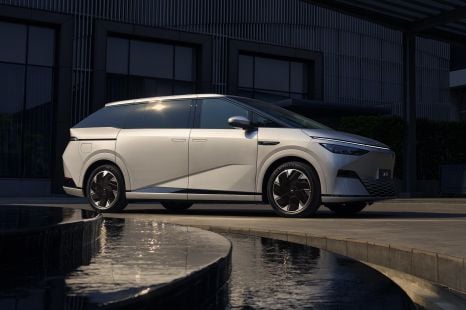

William Stopford
Will 2026 be the year of the people mover in Australia? China seems to think so
5 Hours Ago
It's a dinosaur, but it won't bite. The Toyota LandCruiser 70 GXL Wagon has charm for days, even though it's not even remotely modern.
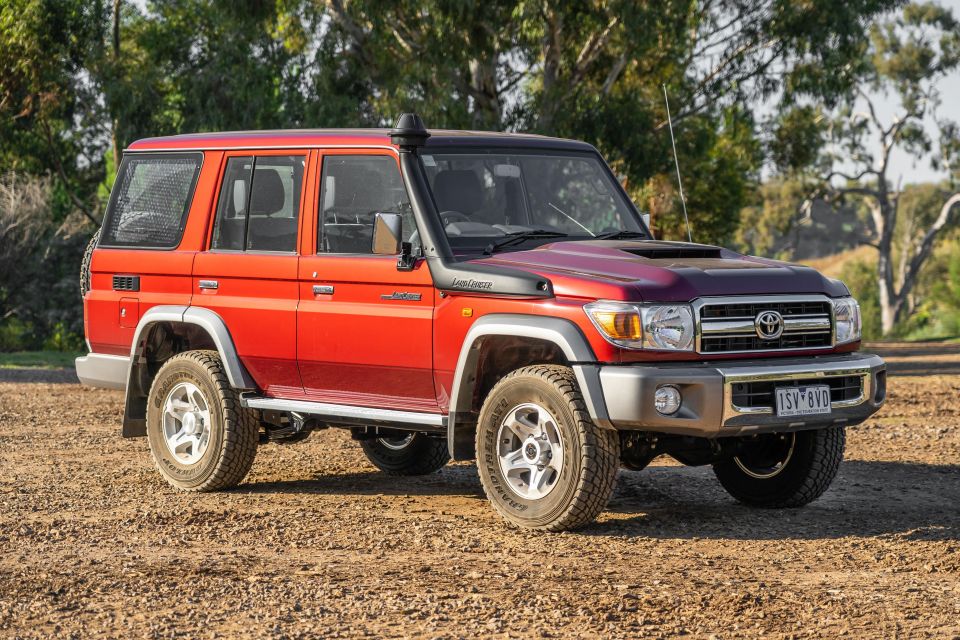
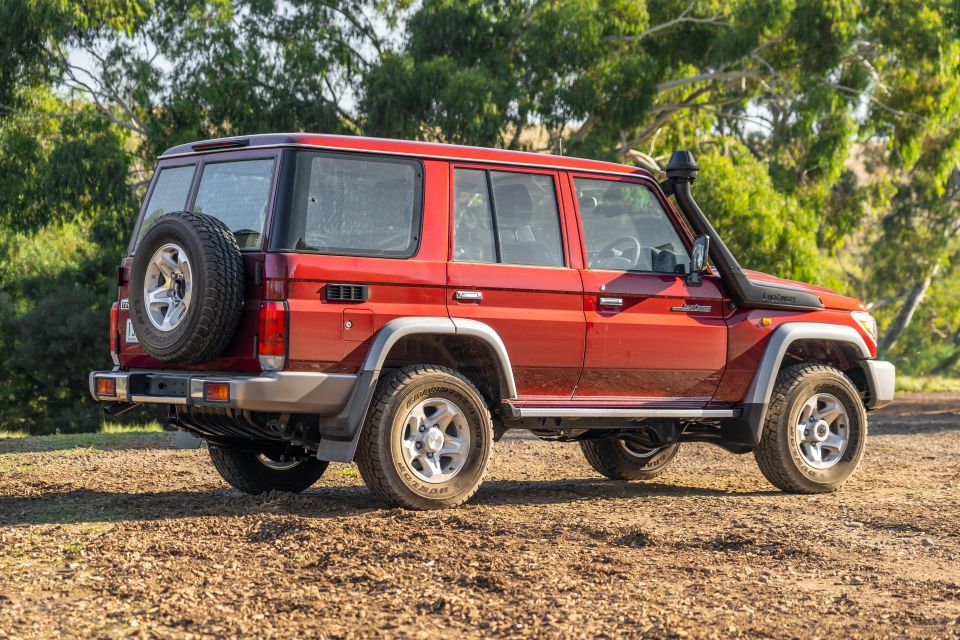

Contributor
New from
$67,400
excl. on-roads

Contributor
New from
$67,400
excl. on-roads


Contributor
New from
$67,400
excl. on-roads

Contributor
New from
$67,400
excl. on-roads
Quickly see how this car stacks up against its competition. Select any benchmark to see more details.
Where expert car reviews meet expert car buying – CarExpert gives you trusted advice, personalised service and real savings on your next new car.
The Toyota LandCruiser 70 Series cuts an increasingly lonely figure in 2021, given the Jeep Wrangler continues to evolve and the Land Rover Defender has grown up.
First released in 1984 and updated gradually since, the 70 Series GXL Wagon is the closest thing we have to an automotive time machine.
There’s an under-stressed turbo-diesel V8 engine under the bonnet, a manual gearbox, and an interior that could kindly be described as utilitarian, although the GXL does pack luxuries like central locking and rain gutters on the roof.
After polish? You’ve come to the wrong place. Keen on unpretentious, go-anywhere ability? The LC70 has it in spades.
Pricing for the 2021 Toyota LandCruiser 70 Wagon starts at $67,400 before on-road costs for the Workmate, and jumps to $71,500 before on-roads for the GXL on test.
Although it can seat more people, the Wagon is actually the cheapest member of the LC70 range.
The most affordable 70 ute is the single-cab GXL, priced from $73,050 before on-road costs.

Buy your new car without the stress. It's fast, simple and completely free.

Great service from Travis and team, second time I have used this business would not hesitate to recommend them to anyone
Craig C.
Purchased a Ford Ranger in Sunshine Coast, QLD
CarExpert helped Craig save thousands on his Ford Ranger, now let us save you on your next new car.
Find a dealStandard kit across the LC70 range includes halogen headlights, an A-pillar snorkel, and air-conditioning.
There’s a 6.1-inch touchscreen infotainment display with Bluetooth, AM/FM radio, and factory satellite navigation on the dashboard as standard, along with a pair of USB ports mounted on the cupholder.
Jumping to the GXL brings decadent touches like rain gutters on the roof, central locking, contrast bumpers, a chrome grille, power windows, and 16-inch alloy wheels.

The LandCruiser 70 Wagon hasn’t been crash tested by ANCAP, although single-cab chassis ute models have a five-star rating from 2016.
Standard safety equipment includes front and side airbags for the driver and passenger, and that’s about it.
You get traction control and anti-lock brakes, but none of the active safety equipment you’d expect of a modern SUV. That means no autonomous emergency braking, no lane-keep assist, and no rear cross-traffic alert.
There’s not even a reversing camera. For some, that’s a drawcard. For others, it’s a black mark that will instantly strike the LC70 from their shopping list.
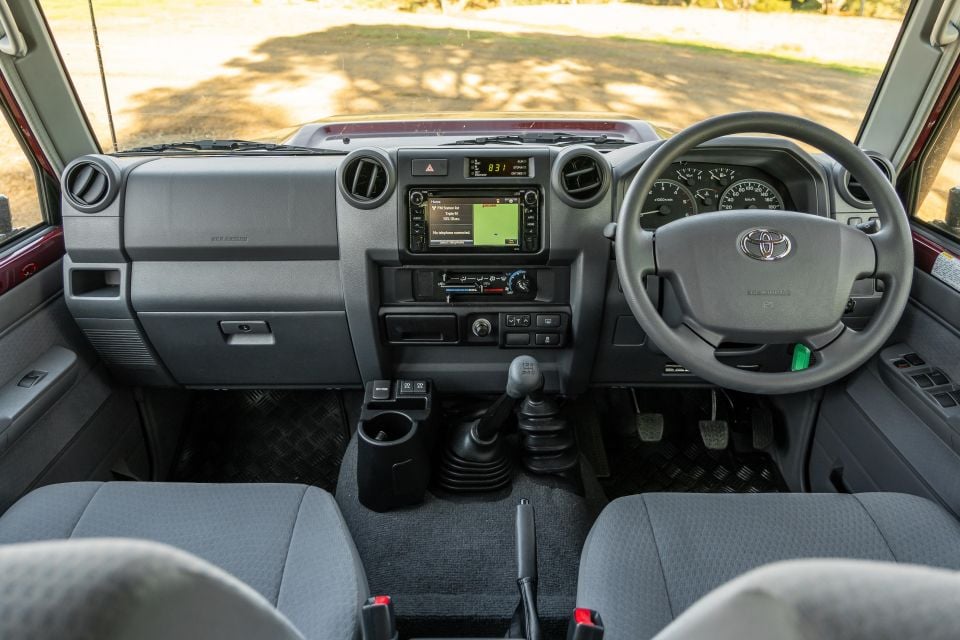
Like stepping back in time. Even the exterior doorhandles are lift-up chrome units, and the doors themselves are impossibly slim compared to most modern cars.
The dashboard is a curious combination of old and new thanks to the 6.2-inch touchscreen infotainment system sitting between the air vents.
It’s simple enough to use and has most of the features you’d want, although DAB radio and smartphone mirroring both feel like major omissions in 2021.
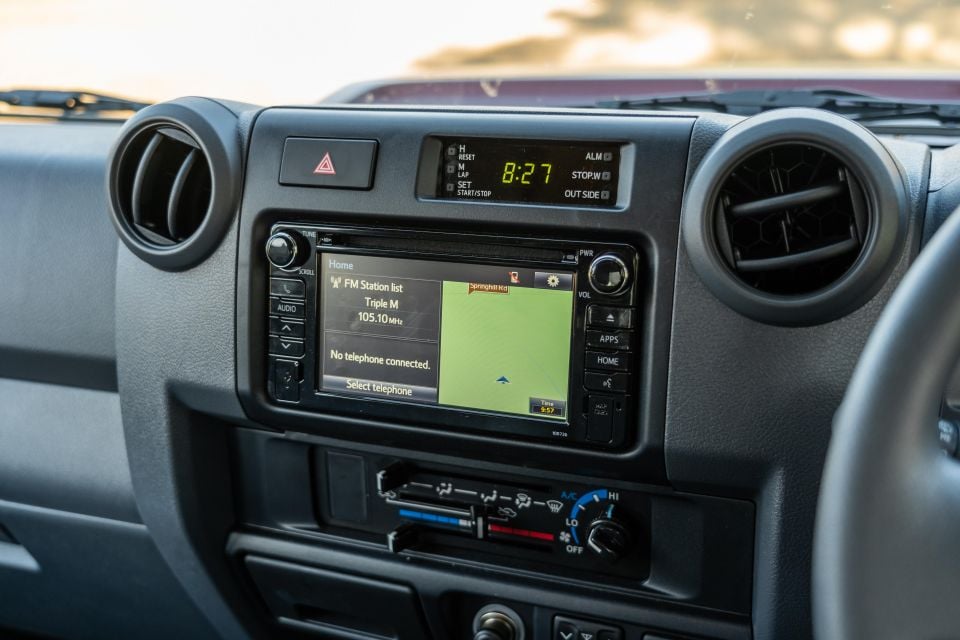
There are two USB charge ports and a phone-sized storage slot mounted to the front of a cupholder sitting next to the gear lever, along with a USB connector on the head unit itself.
Contrasting the screen are the old-school air conditioning controls, the manual control for the aerial, and the cigarette lighter. There’s even an ashtray.
The driver and passenger sit in flat chairs trimmed in soft, velour-like cloth, and the driving position is properly old-school. Adjustment is limited for tall drivers, although the steering wheel does adjust for reach and rake.
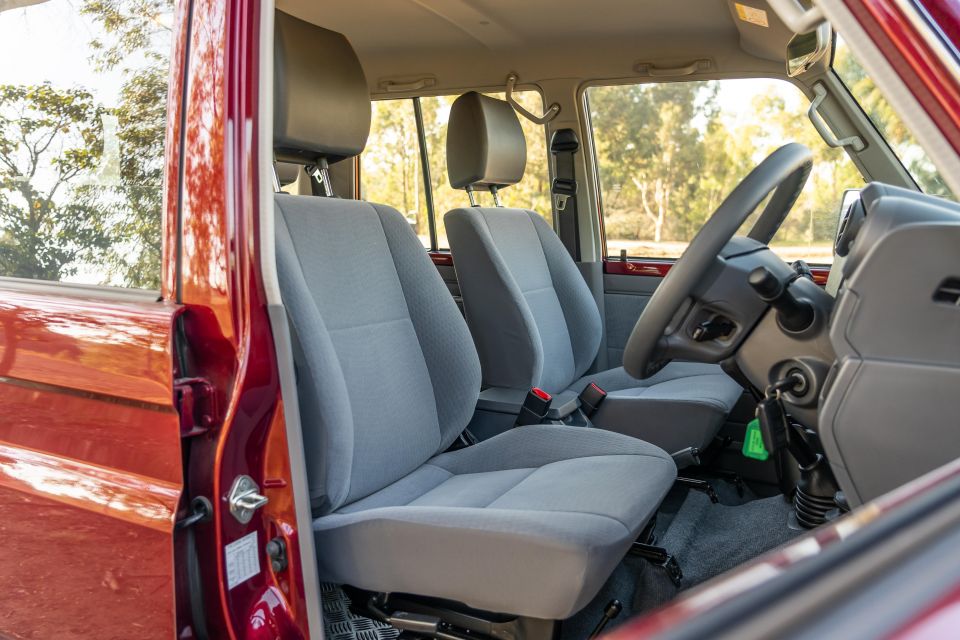
Forget digital dials, the LC70 has two easy-to-read analogue gauges and a simple odometer readout with information about the DPF in front of the driver. That’s it.
Storage is limited by modern standards. There’s slim door pockets and a small space between the front seats, but that’s about the extent of it. Thankfully the glovebox is relatively spacious.
Rear passengers get decent legroom, even behind taller drivers, and plenty of headroom from the tall, boxy roofline. The view out is positively panoramic thanks to the tall, square windows.
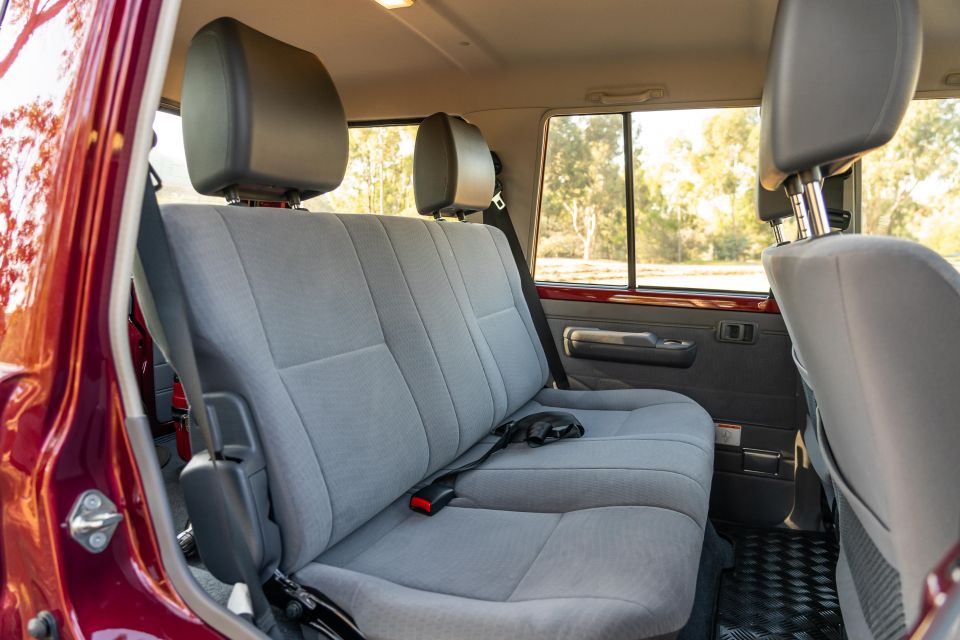
The counter to that is the fact the windows aren’t tinted and there’s no air vents back there, turning the car into something of a greenhouse on a sunny day.
On a five-hour drive in 30-degree weather, there were plenty of complaints from rear passengers as they got hot under the collar.
The LC70 is also the one of the few cars on sale we’ve seen with a lap belt for the middle passenger.
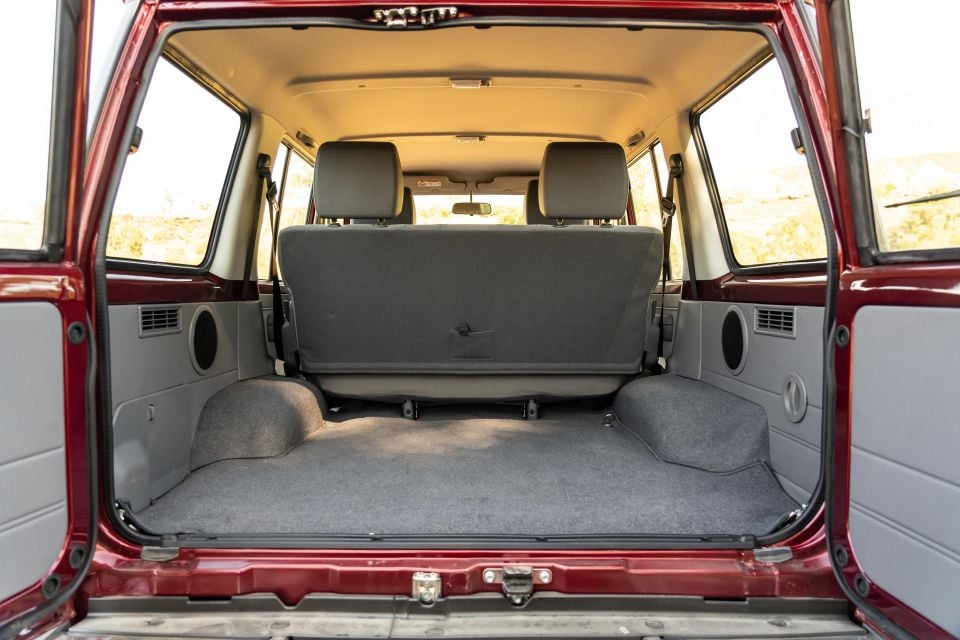
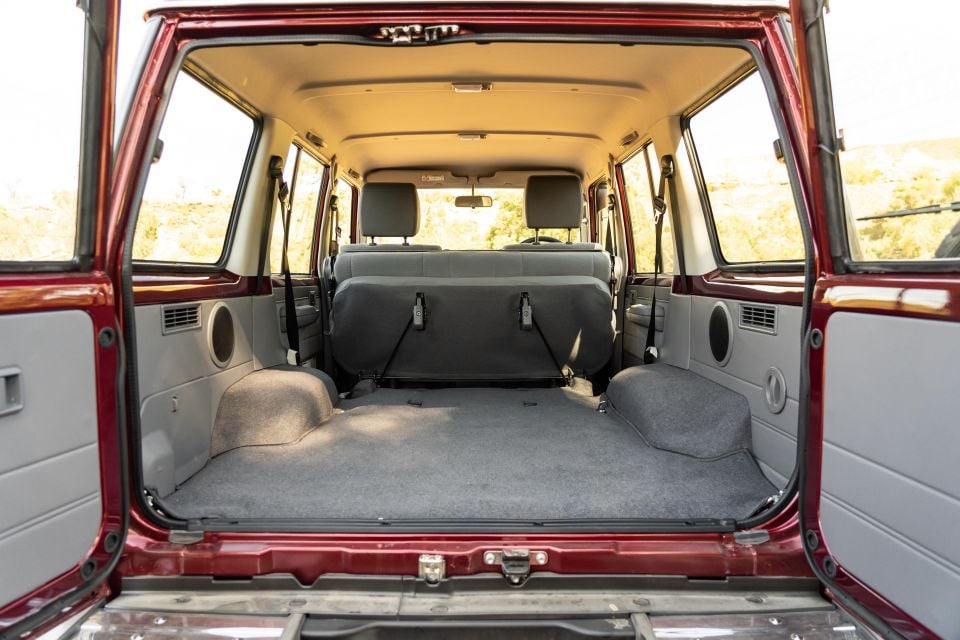
The rear bench backrest folds and the whole row tumbles forward as one piece.
Opening the boot (through side-opening barn doors) reveals a broad space with some (minimal) wheel arch intrusion.
As you can see from the images, the spare wheel is mounted on the tailgate old-school style.

Power in the LandCruiser 70 comes from a 4.5-litre turbo-diesel V8 engine, mated to a five-speed manual transmission.
It has a switchable four-wheel drive system with two- and four-wheel drive high range, along with four-wheel drive low-range. There’s also locking differentials, front and rear.
Peak power 151kW at 3400rpm, peak torque is 430Nm between 1200 and 3200rpm.
Claimed fuel economy is 10.7 litres per 100km on the combined cycle. Although that limits range somewhat, the 130L fuel tank (180L on the Troop Carrier) helps compensate.

Thought the interior was like a time capsule? Wait until you turn the key.
In a world where cars are getting easier to drive, with lighter steering and more assistance technology, the LC70 still demands firm inputs and a healthy dose of muscle.
The clutch is firm and springy, and the shifter demands decisive inputs. There’s no dainty wrist flicks or lightning second-to-third changes here, although the fact our tester had done less than 1000km means there was some loosening up to be done.
Don’t be fooled into thinking the ‘Cruiser is a total pain to drive in the city, though.
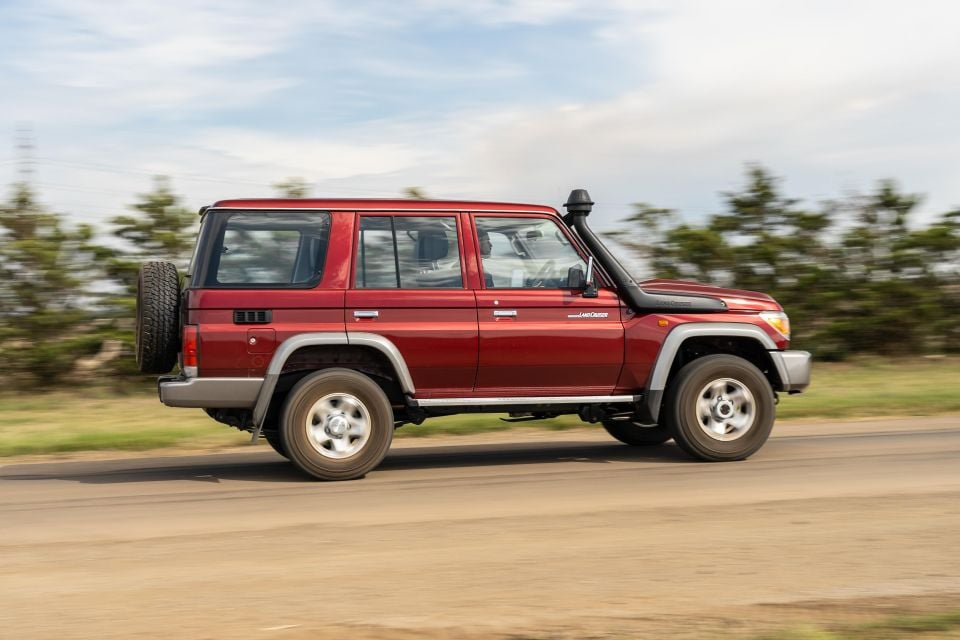
Sure, it’s a bit of work in stop/start traffic, but the V8 engine and short gearing mean you can realistically leave it in second gear most of the time and just lean on the torque at essentially any speed.
It’s a gruff bastard of an engine, with a rough sound and plenty of vibration through the steering wheel when you lean on it, but there’s no arguing with its effectiveness.
With 430Nm on tap between 1200 and 3200rpm it’s tailored for towing and off-roading, where big pull from low speeds is essential.
It’s also likely to be fearsomely reliable. Could more power be squeezed from the engine? Probably, but its under-stressed and effortlessly torquey nature make it perfect for the big mining fleets that drive demand for this car.
The ride is exactly what you’d expect of a leaf-sprung, solid-axle off-roader in the city. It’s firm at the front, and speed bumps or sharp hits at even a snail’s pace get the rear bouncing when the car is unladen.
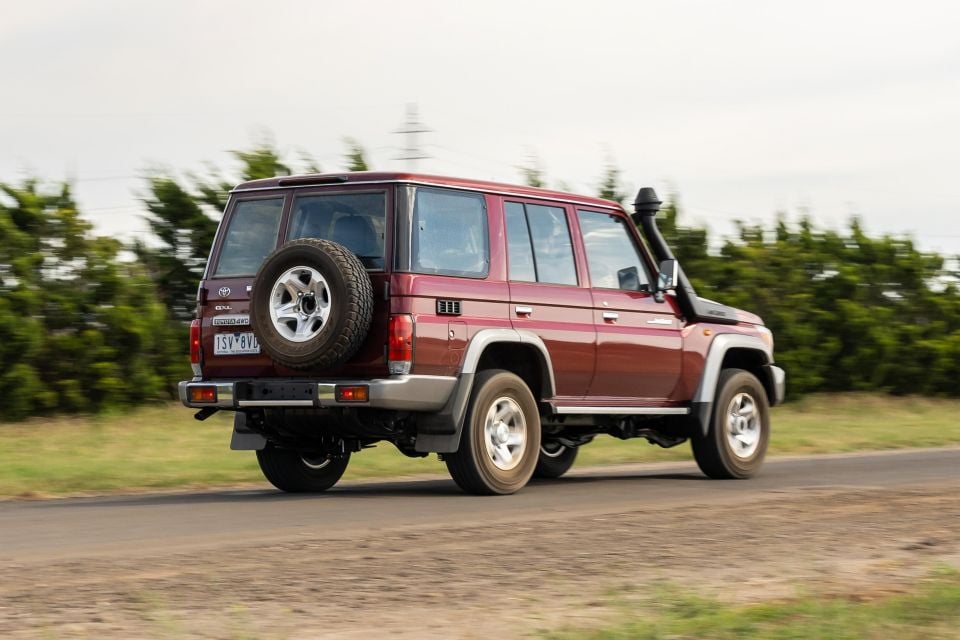
Even with a full boot and passengers in the back there’s a sharpness to the ride.
With massive, upright windows and a properly elevated driving position (sorry, your CX-3 doesn’t actually have a commanding seating position) the car is dead easy to place in traffic, although the lack of a reversing camera is downright rude in 2021.
The LandCruiser 200 is the perfect vehicle for a trip around Australia, with its plush interior and relaxed gearing. The LandCruiser 70 is not.
For starters, the short-geared five-speed manual has the V8 spinning at around 2500rpm at 110km/h, where its presence is always felt in the cabin. The steering is always wobbling away in your hands on the open road, and the slim pillars and upright windscreen make for plenty of wind noise.
Although you can crank up the stereo to help drown it out, it’s tiring on long drives.
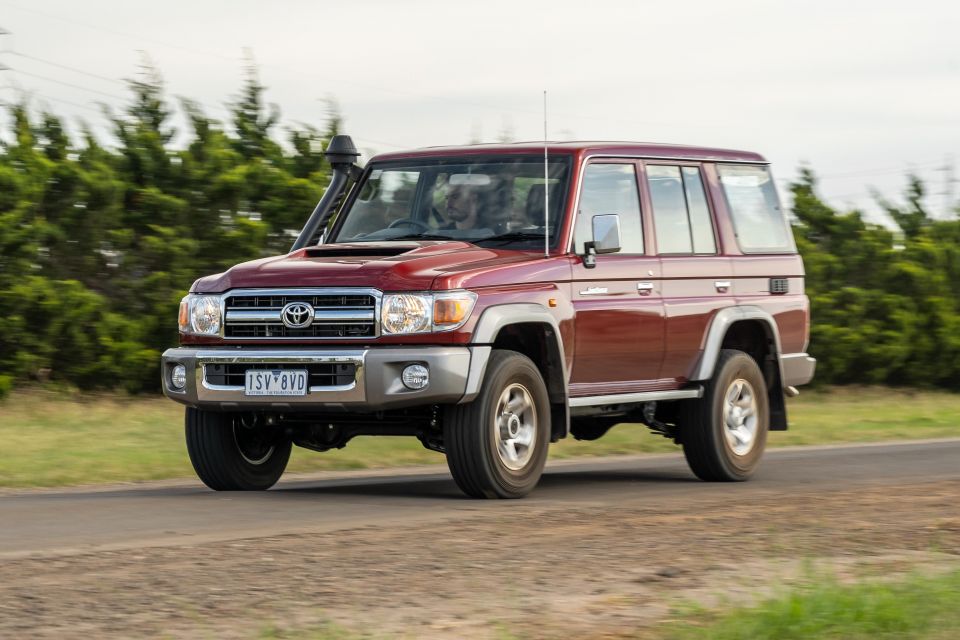
It’s also worth bearing in mind there’s no lane-keeping, adaptive cruise, or blind-spot monitoring, all of which help lighten the load on longer journeys.
Of course none of this is the point. We’re not in the business of making excuses for carmakers – there’s no getting away from the ‘Cruiser’s flaws in 2021 – but its strengths lie in its go-anywhere ability.
There’s switchable four-wheel drive with low-range and locking front and rear differentials, and the short-geared V8 engine has oodles of low-down pull.
We did some light off-roading in the Victorian High Country and the ‘Cruiser never felt like it was breaking a sweat.
Previous experience shows it’ll be nipping at the heels of much newer metal (ahem, Jeep Wrangler) when the going gets properly tough.
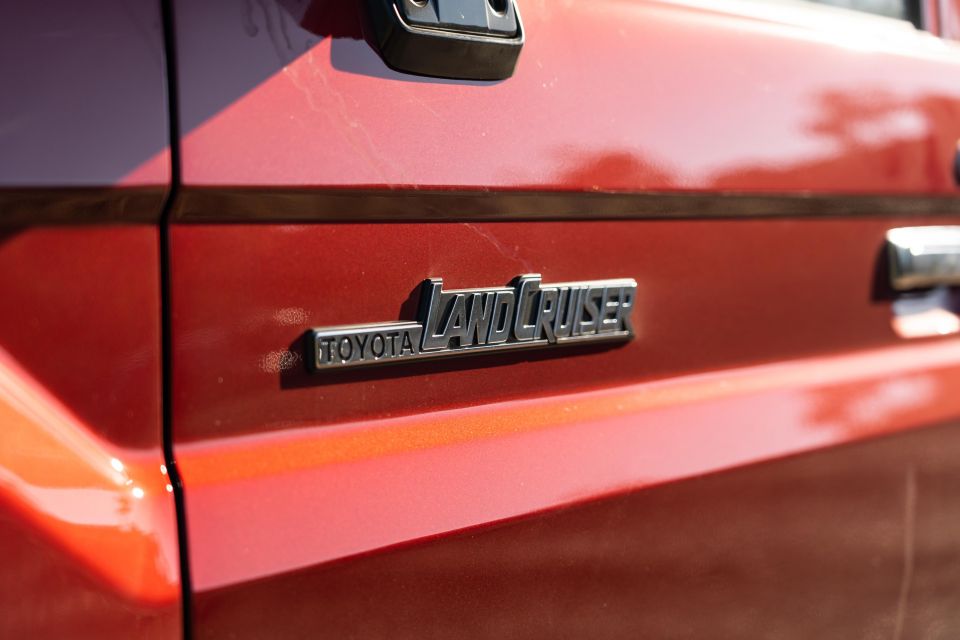
Where expert car reviews meet expert car buying – CarExpert gives you trusted advice, personalised service and real savings on your next new car.
Maintenance in the Toyota LandCruiser 70 is required every six months or 10,000km.
The first four services each cost $360.
Like the wider Toyota range, the LandCruiser 70 is covered by a five-year, unlimited-kilometre warranty.
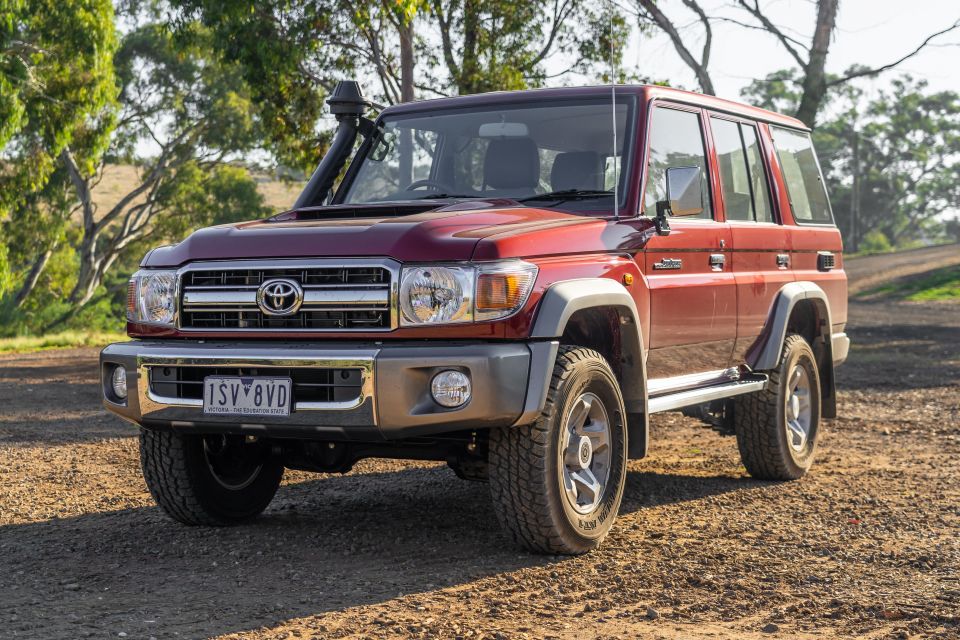
It’s not the most refined beast in the world, but that doesn’t diminish the appeal of the LandCruiser 70 GXL Wagon.
Charming is the best word for it. It’s expensive, and in 2021 the lack of active safety features is hard to defend.
It’s old-fashioned to drive, thirsty, and doesn’t really work on the highway.
It still does a job for Toyota and the fleets that rely on it, though. Like the Land Rover Defender, we’re going to miss it when it’s gone.
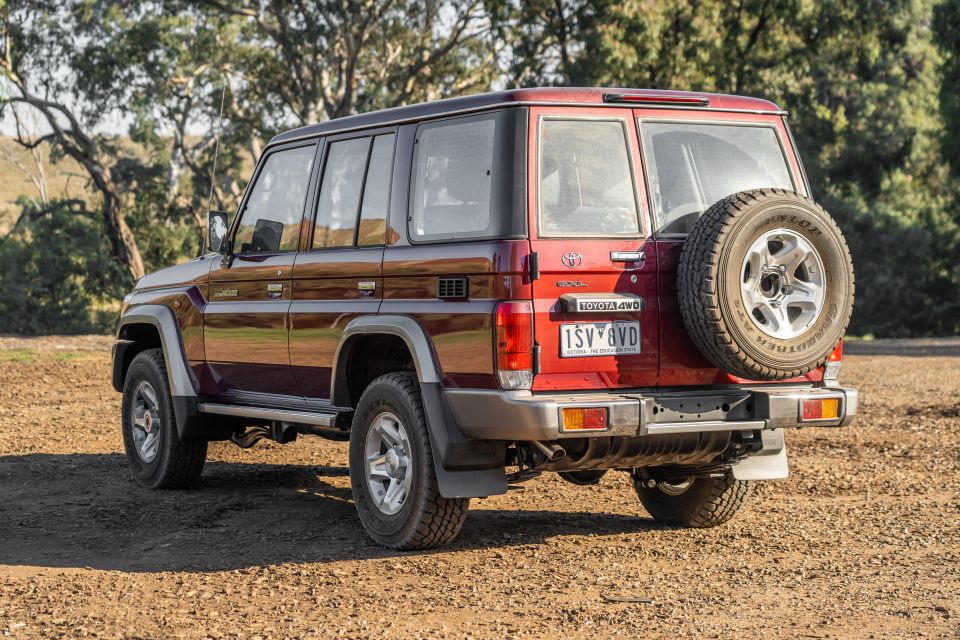
Click the images for the full gallery
MORE: Toyota LandCruiser news, reviews, comparisons and videos
Where expert car reviews meet expert car buying – CarExpert gives you trusted advice, personalised service and real savings on your next new car.
Scott Collie is an automotive journalist based in Melbourne, Australia. Scott studied journalism at RMIT University and, after a lifelong obsession with everything automotive, started covering the car industry shortly afterwards. He has a passion for travel, and is an avid Melbourne Demons supporter.


William Stopford
5 Hours Ago


Max Davies
6 Hours Ago
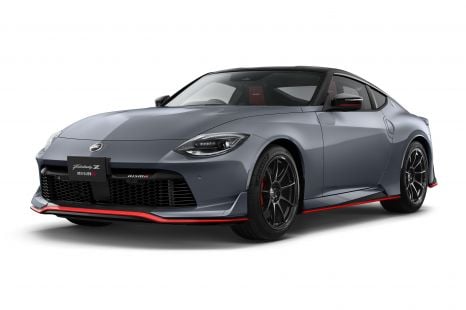

Derek Fung
7 Hours Ago
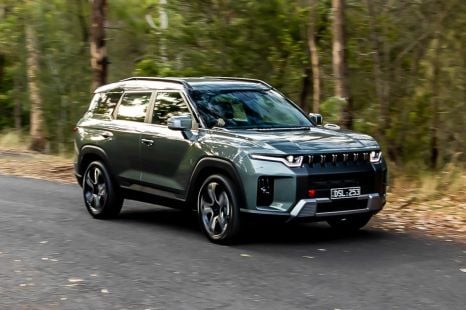

Matt Campbell
13 Hours Ago


Ben Zachariah
1 Day Ago


Damion Smy
1 Day Ago